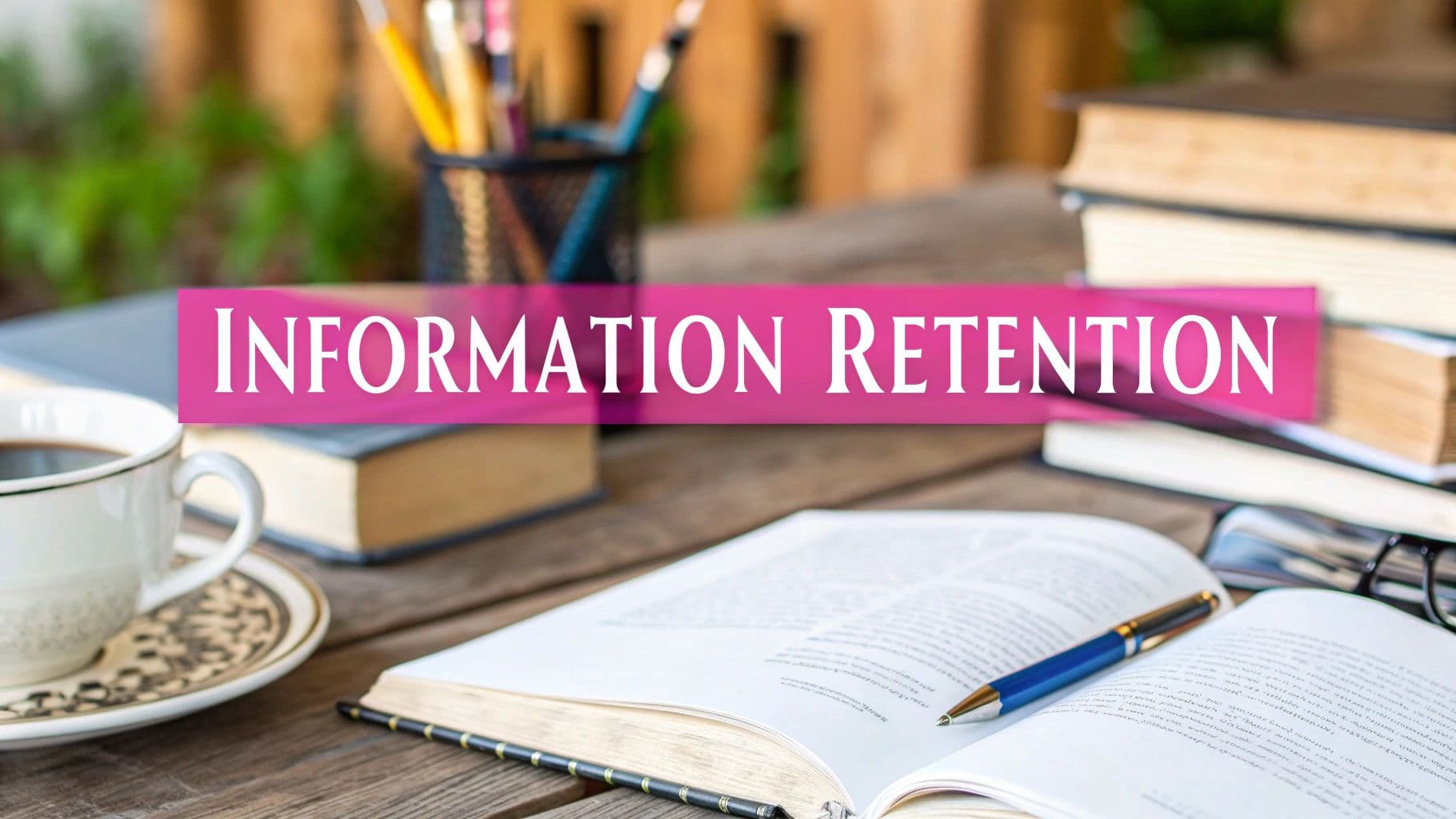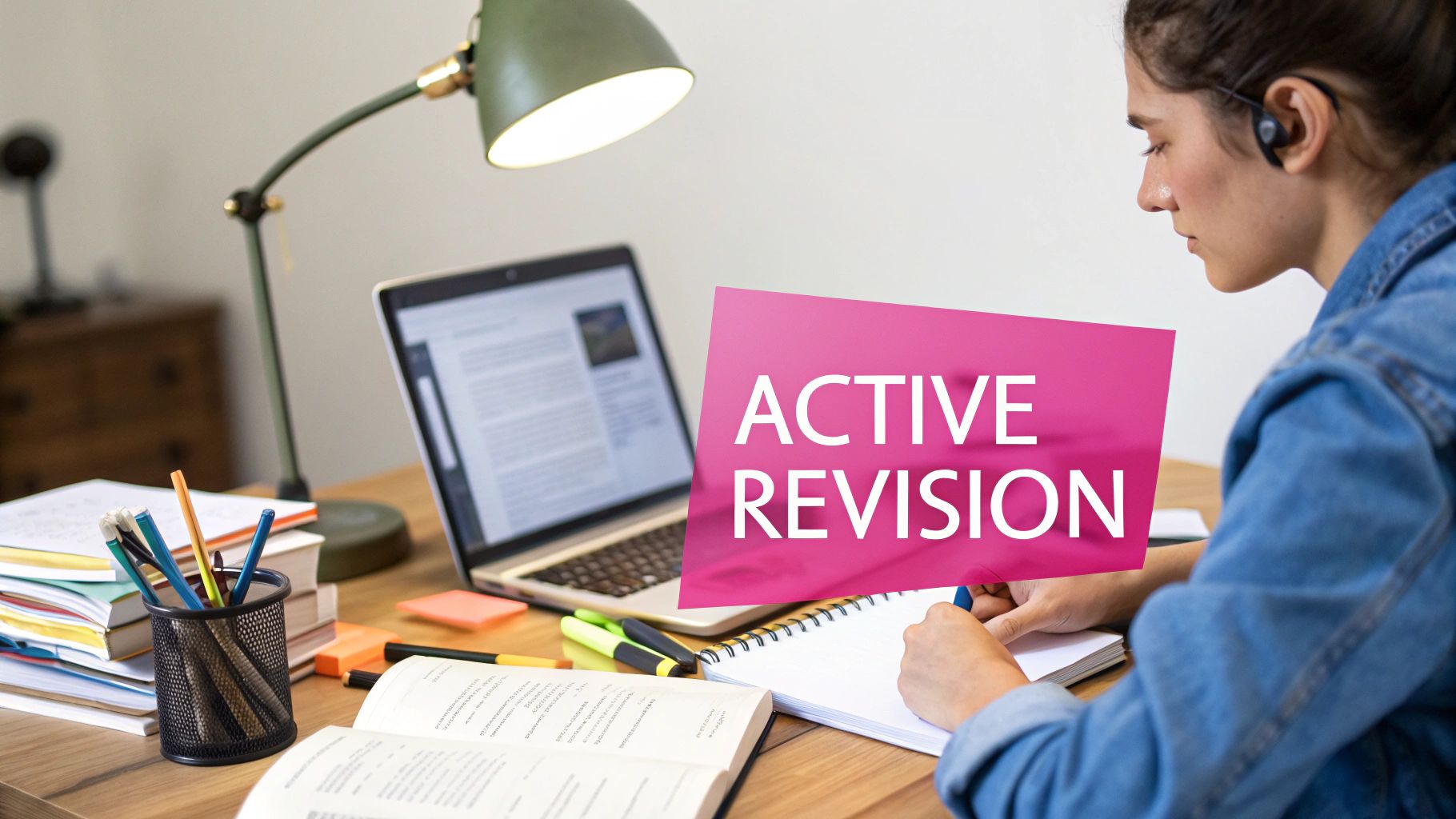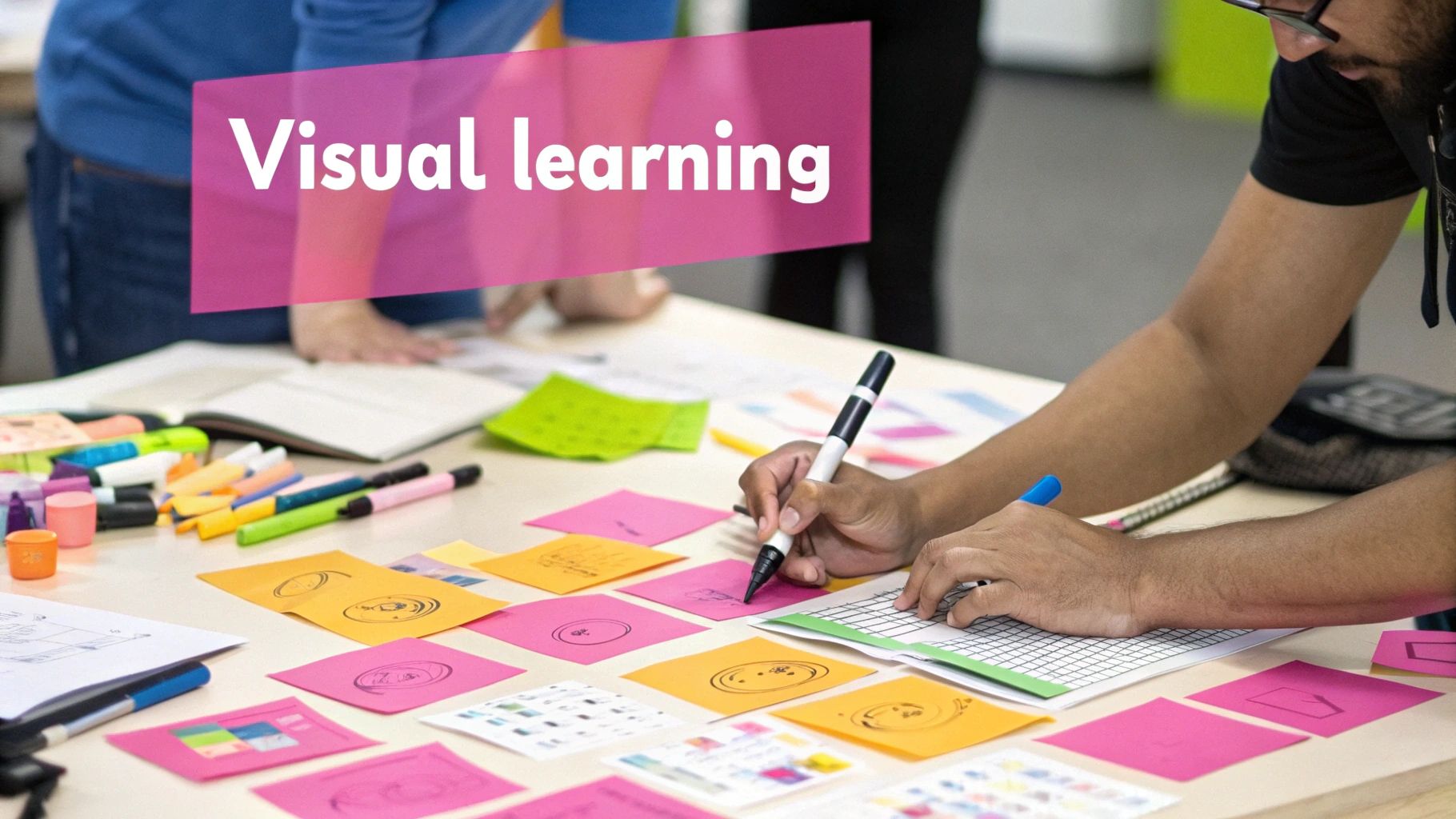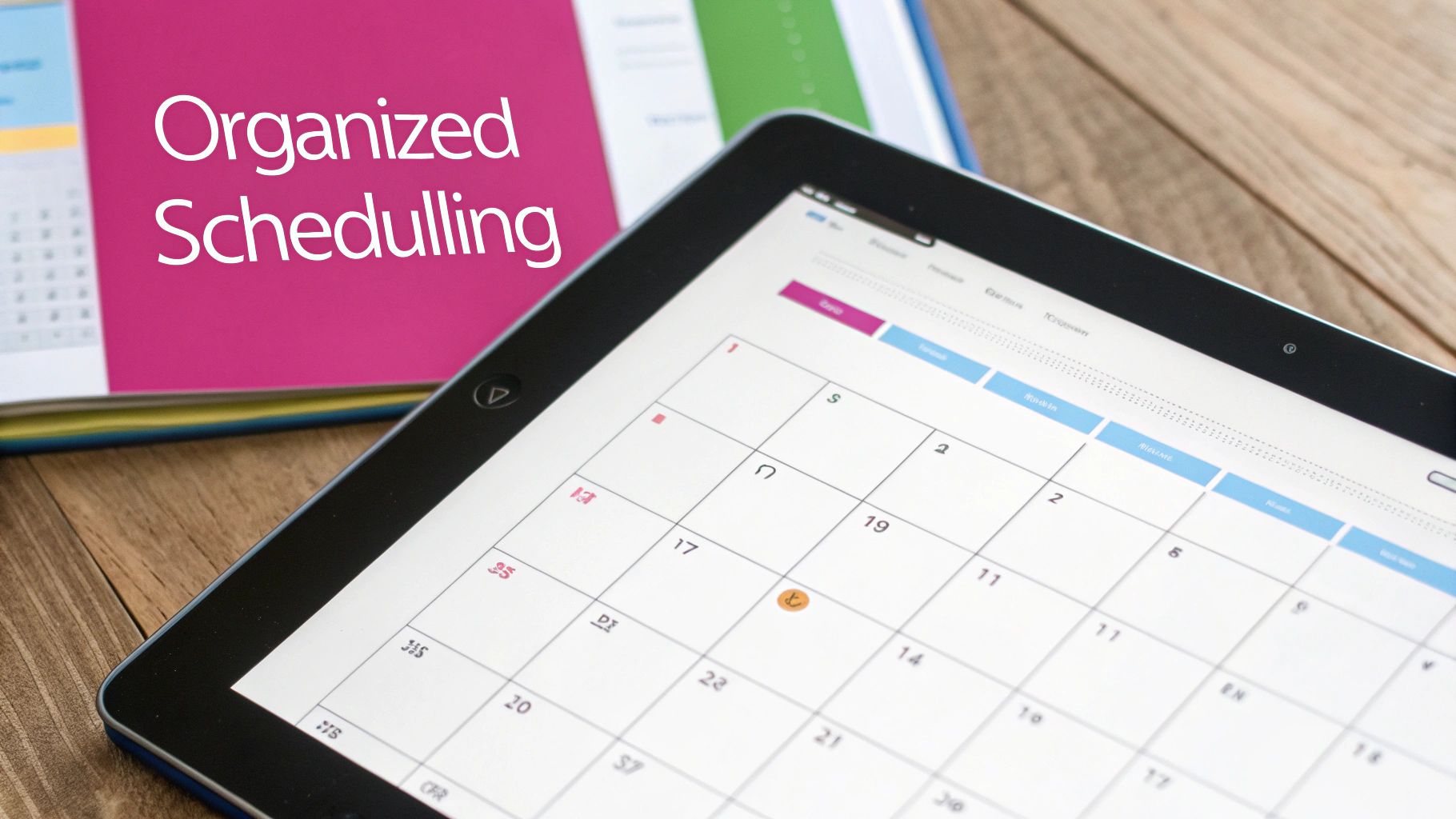
10 Best Ways to Retain Information: Expert Strategies That Transform Learning
Understanding How Your Brain Actually Learns

Learning effectively requires understanding how our brains process and store information. Rather than just memorizing facts, successful learning happens when we create meaningful connections between new information and existing knowledge. Our brains work like an intricate network, with each new concept finding its place among related ideas.
The Forgetting Curve and The Importance of Active Learning
One of the biggest obstacles to learning is how quickly we forget new information without active engagement. Research shows that within just one hour, we lose about 50% of what we've learned. This increases to 70% after 24 hours and 90% within a week if we don't review the material. Simply reading or listening once isn't enough for long-term retention.
The good news is that different learning approaches lead to very different retention rates. The Learning Pyramid shows that passive methods like lectures and reading only result in 5-10% retention. In contrast, active methods like group discussions (50%), practicing skills (75%), and teaching others (90%) lead to much better results. For example, when you explain a concept to someone else, you need to organize the information clearly in your mind and express it in your own words, which helps cement your understanding.
The Power of Writing and Spaced Repetition
Specific techniques can boost our ability to remember information long-term. Taking notes by hand, for instance, engages more parts of the brain than typing does. The physical act of writing creates stronger memory traces by involving multiple senses. Studies have found that students who write notes by hand often understand and remember the material better than those who type.
Spaced repetition is another proven method for fighting forgetfulness. This technique involves reviewing information at gradually increasing intervals – perhaps after an hour, then a day, then several days, then a week. Like building muscle through repeated exercise, each review strengthens the memory connections in your brain.
By applying these insights about how our brains naturally learn and remember, we can move beyond ineffective study habits and use methods that actually work. This foundation helps us develop better learning strategies and prepares us for more advanced techniques like active recall.
Mastering Active Recall: Beyond Basic Flashcards

The way our brains learn and store information relies heavily on active engagement with the material. Active recall – the practice of retrieving information from memory rather than passively reviewing it – stands out as one of the most powerful learning techniques. When you challenge yourself to recall facts and concepts without referring to notes, you strengthen the neural pathways that help you retain that knowledge long-term.
Designing Personalized Recall Exercises
The most impactful active recall practice matches both your learning preferences and the subject matter. For instance, when studying a new language, try creating complete sentences on the spot rather than just memorizing vocabulary lists. If you're learning biology, explain complex systems in your own words without looking at your textbook. This approach helps identify gaps in your knowledge while making the material more meaningful and memorable. The key is to find methods that naturally align with how you process information.
Effective Question Frameworks For Different Content
The questions you ask yourself during practice sessions directly impact how well you learn the material. Simple recall questions work well for basic facts, but complex topics require deeper exploration. Build questions that examine relationships between concepts and probe the underlying principles. For example, instead of just asking "What is photosynthesis?" try "How does photosynthesis connect to the carbon cycle?" Here's a practical guide for structuring questions:
| Content Type | Question Framework Examples |
|---|---|
| Facts & Figures | What is…? Who was…? When did…? |
| Concepts & Theories | Why does…? How does…? Explain the relationship between… |
| Procedures & Processes | What are the steps involved in…? How would you apply… in a real-world scenario? |
Leveraging The Teaching Effect
Teaching others is one of the most effective ways to cement your own understanding. When you explain a concept to someone else, you must organize the information clearly and anticipate their questions. This process forces you to examine the material from multiple angles and identify any weak spots in your knowledge. For example, try explaining a difficult concept to a friend or family member, even if they're not studying the same subject. The act of teaching strengthens your grasp of the material while potentially helping others learn too.
Active recall becomes most powerful when you combine these different approaches. By creating personalized exercises, asking thoughtful questions, and taking on the role of teacher, you build a deeper understanding that stays with you. This comprehensive approach moves beyond simple memorization to develop real mastery of the subject matter.
The Digital Dilemma: Why Traditional Note-Taking Still Wins

When it comes to retaining information effectively, the method you use to first record and process that information makes a big difference. While digital note-taking offers convenience, research consistently shows that putting pen to paper creates stronger learning connections. Let's explore why traditional note-taking remains such a powerful tool for learning and memory.
The Neuroscience of Handwriting
Writing by hand activates multiple regions of the brain in ways that typing simply cannot match. As you form each letter, the physical movements combine with visual feedback and tactile sensations to create rich neural connections. Studies show that students who handwrite their notes typically understand concepts more deeply than those who type them. It's similar to how an artist remembers intricate details of a subject they've drawn versus simply taking a photo – the act of creating by hand leads to deeper processing and stronger memories.
Organizing for Optimal Recall: Mind Mapping and the Cornell Method
Good organization methods make notes even more effective for learning. Two standout techniques are mind mapping and the Cornell method. Mind maps work with your brain's natural tendency to make connections, using a central concept that branches out to related ideas. This visual approach helps you see relationships between concepts clearly. The Cornell method provides structure through dedicated areas for notes, questions, and summaries. This format gets you actively engaging with the material rather than just passively recording it.
Combining Traditional and Digital: The Best of Both Worlds
This doesn't mean completely avoiding digital tools. The real power comes from thoughtfully combining handwritten notes with useful digital features. For example, using a tablet with a stylus gives you the memory benefits of writing by hand plus the ability to organize and share notes digitally. Apps like Notescast can transform your handwritten study materials into video content, helping reinforce learning in new ways. By mixing traditional and digital methods based on how you learn best, you can build a note-taking system that truly works for you. The key is finding the right balance of tools that help you process and remember information effectively.
Strategic Spaced Repetition: Timing Is Everything

Active recall helps retrieve information from memory, but equally important is knowing when to practice that recall. Research shows we forget about 50% of new information within just one hour. This is where spaced repetition comes in – by strategically scheduling review sessions at gradually increasing intervals, you reinforce memory connections over time. Think of it like building muscle through consistent exercise – rather than cramming information all at once, you strengthen your knowledge through systematic practice spread out over time.
Crafting Your Personalized Spaced Repetition Schedule
The most effective spaced repetition schedule is one that fits naturally into your life. Start by reviewing new material within an hour of first learning it to catch information before it fades. Then gradually space out subsequent reviews – perhaps the next day, a few days later, then weekly, and so on. For example, when learning a new word on Monday, you might review it Tuesday, Friday, next Wednesday, and two weeks after. Each review session helps cement the information more firmly in your memory.
Combining Spaced Repetition With Other Retention Techniques
While spaced repetition is powerful on its own, pairing it with active recall and elaboration creates even stronger learning. During review sessions, test yourself by trying to recall information before checking your notes. Then go deeper by asking questions like "How does this connect to concepts I already know?" and "Why is this information significant?" This builds rich networks of related knowledge rather than isolated facts. You're not just memorizing – you're developing a thorough understanding that lasts.
Utilizing Digital Tools to Optimize Your Reviews
Managing multiple review schedules can get complicated, especially with lots of material. Thankfully, several digital tools can handle the scheduling for you. Anki uses smart algorithms to optimize review timing based on your performance. Notescast lets you turn written notes into video content for mobile review. These tools track optimal review timing so you can focus on actually learning the material. With the right digital support, spaced repetition becomes a seamless part of your study routine, helping you review the right information at the right intervals for maximum retention.
Engagement Techniques That Transform Learning
When it comes to learning effectively, passive methods like reading and listening only scratch the surface. This section explores proven techniques for actively engaging with information to build lasting knowledge and understanding. By taking an active role in the learning process, you can dramatically improve how well you retain and apply new concepts.
The Power of Group Learning
Learning with others creates a dynamic environment that significantly improves retention. Research shows that group discussions lead to 50% retention rates, compared to just 5-10% from lectures or reading alone. This dramatic difference comes from the active nature of group learning – explaining ideas to peers, answering questions, and exploring different viewpoints together helps cement understanding. Study groups are particularly effective since members can quiz each other, debate concepts, and teach material in their own words. This collaborative approach strengthens memory and makes learning more engaging for everyone involved.
Teaching Others: Solidifying Your Own Knowledge
One of the most powerful ways to master new information is to teach it to someone else. Known as "the protégé effect," teaching forces you to structure information logically, prepare for questions, and explain concepts clearly. Studies indicate teaching leads to an impressive 90% retention rate. For example, after learning something new, try explaining the key points to a friend or family member. The process of teaching not only reinforces your own grasp of the material but also reveals any gaps in your understanding. This transformation from passive learning to active teaching creates deeper, more lasting knowledge.
Hands-On Application: Learning by Doing
Nothing beats direct experience when it comes to learning. Whether you're building models to understand physics, writing code to learn programming, or role-playing historical events, active participation creates stronger neural pathways than passive observation. Research shows hands-on practice leads to 75% retention rates. If you're studying a new language, use it in real conversations. For biology, conduct experiments and draw diagrams. Converting abstract ideas into concrete actions helps your brain form lasting connections. This principle of learning through doing has consistently proven more effective than traditional passive methods. By engaging multiple senses and applying concepts practically, you create deeper understanding that stands the test of time.
Building Memory Bridges: Advanced Connection Techniques
A deep understanding of information requires going beyond simple memorization to build meaningful connections in your mind. This section explores proven techniques for connecting new knowledge to what you already know, helping you create a strong mental framework that improves both recall and comprehension.
Linking New Information to Existing Knowledge
When learning something new, connecting it to your existing knowledge base is one of the most effective ways to make it stick. Think of your memory like a growing web of connected ideas. For example, if you're studying the French Revolution for the first time, you can link it to your knowledge of the American Revolution by comparing their causes, key figures, and outcomes. These memory bridges make new information easier to grasp and remember. The process of actively seeking these connections also strengthens your critical thinking as you identify relationships between different concepts.
Creating Memorable Visual Associations
Research shows that using visual imagery can significantly boost memory formation. Students who create vivid mental pictures of concepts tend to remember them better than those who only process information verbally. For instance, to understand photosynthesis, picture a plant soaking up sunlight like a solar panel, converting light into usable energy. The more unique and striking the mental image, the better it sticks. You can also use analogies – like comparing electricity flow to water moving through pipes to understand electrical circuits. These visual anchors help make abstract ideas concrete and easier to recall later.
Developing Powerful Memory Aids
Memory aids like acronyms, rhymes, and visualization techniques can help you remember complex information more easily. A classic example is ROYGBIV for remembering rainbow colors (Red, Orange, Yellow, Green, Blue, Indigo, Violet). Another useful approach is the method of loci, where you associate items you need to remember with specific locations in a familiar place. Picture walking through your home and placing each item from your grocery list in different rooms. This gives you clear memory cues when you need to recall the information. Creating your own personalized memory aids based on how you learn best can boost retention significantly.
By combining these connection techniques – linking to prior knowledge, using visual associations, and creating memory aids – you can fundamentally change how you learn and retain information. This active approach not only helps you remember more but also builds deeper understanding as you create meaningful connections between ideas. With practice, these techniques become natural tools for continued learning across any subject.
Ready to transform your note-taking and supercharge your learning? Notescast leverages the power of AI to turn your study materials into engaging videos, making learning easier and more effective. Check out Notescast today and experience the future of learning: https://notescast.app/
